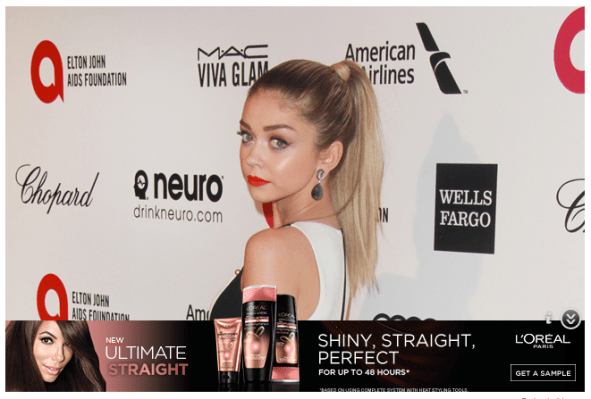GumGum announced this morning that it has raised $26 million in a Series C round led by Morgan Stanley Expansion Capital.
Founded in 2007, the company offers technology to identify the content of an image, then place ads to match the picture — for example, here’s a GumGum-powered Coke ad that appears in an image of “healthy” pizza. The company also says it has expanded beyond in-image ads to support a broader selection of advertising that appears alongside editorial content.
GumGum has now raised more than $36 million in total funding, according to CrunchBase. In addition to Morgan Stanley, previous investors including NEA, Upfront Ventures and First Round Capital also participated in the funding.
The company plans to spend the new money on additional growth overseas, improved image recognition and computer vision, and product development for ad units. The company says it works with more than 2,000 premium publishers reaching 400 million visitors each day.
Update: I just got off the phone with founder and CEO Ophir Tanz, who said the company has been profitable for the past three years, and that it’s currently “pacing a bit above” a $75 million run rate for annual revenue. So the funding is all about growth.
Tanz also said that Morgan Stanley brings a unique perspective to the investment, including a focus on the global market, as well as experience with public companies. In fact, he predicted that GumGum could beready to go public by the end of 2017 — but he also emphasized, “It doesn’t mean we’re going to do that at the end of next year or the following year or the year after that.”
As for why GumGum is expanding beyond in-image ads, Tanz said there’s an opportunity to apply the company’s technology more broadly. He characterized GumGum as “an engineering company focused on image recognition,” as opposed to the “common misconception … that we’re a marketing company that found this new ad unit.”
“I would argue we’re the only company in ad tech that completely owns a format in its entirety,” he added.
Those new products could eventually include video — Tanz said the team has already done some tests in this area. At the same time, he argued that there’s still a big opportunity with plain old images, which usually represent the most desirable real estate on the page.
“When you look at video it’s just a very saturated space where a lot of players are going after too little quality inventory,” he said. “That’s a unique supply-and-demand relationship, and as a result of that, there’s also a limited opportunity there today from a value add perspective.”
